From underground vaults, caves, nuclear bunkers and even a power station under a mountain, if you are looking for a unique way to see Scotland, then this is the post for you.
Here are the best places to go underground in Scotland:
- The Real Mary King’s Close – explore this historic underground street in Edinburgh
- The Edinburgh Vaults – hear ghost tales in these spooky vaults
- Glasgow Central Station tour – go underground in Scotland’s busiest station
- The Museum of Lead Mining, Wanlockhead – a hidden gem in south Scotland
- Cruachan Power Station – go inside the Hollow Mountain
- St Margaret’s Cave, Dunfermline – a quirky spot hidden under a car park
- Scotland’s secret bunkers – explore relics of the cold war near St Andrews, Skelmorlie and Barnton, Edinburgh
- Scotland’s best caves – visit Smoo Cave, the Bone Caves and King’s Cave Arran
Scotland’s Underground Vaults
Scotland’s underground vaults are historic, often hidden spaces, originally used for storage, workshops, and taverns, many became abandoned due to overcrowding and poor conditions.
Today, they’re famous for their eerie atmosphere and attract visitors through ghost tours and historical exploration. Here are the best ones to visit.
1. The Real Mary King’s Close, Edinburgh
The Real Mary King’s Close is one of Edinburgh’s most unique places to visit. Hidden beneath Edinburgh’s Royal Mile, this underground street or ‘close’ dates all the way back to the 17th century and was once home to around 600 people, businesses, and markets.
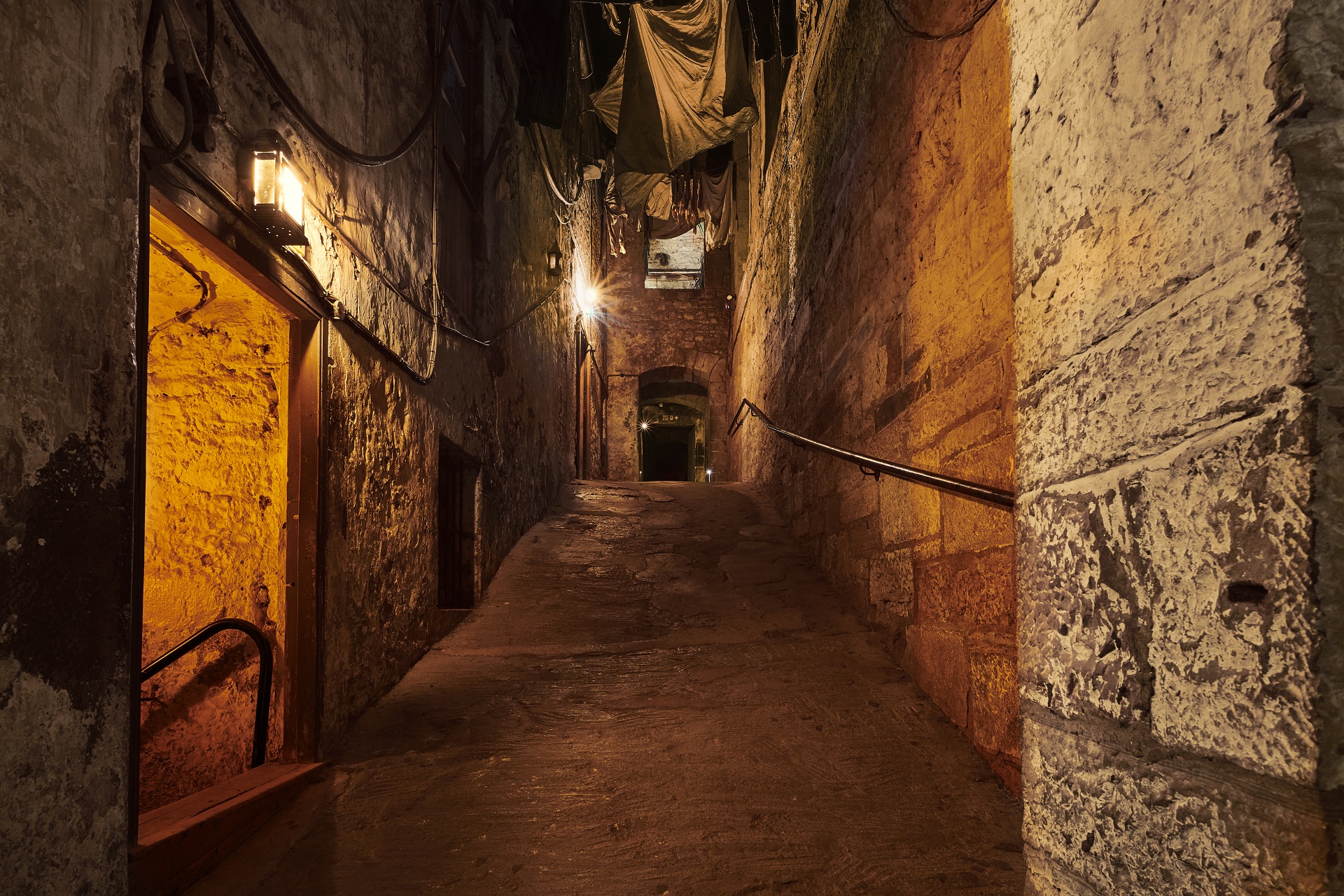
The close takes its name from one of its most important residents, Mary King, a ‘merchant burgess’ with social standing who lived on the street. Mary was a fine cloth maker and dressmaker and had a shop on the Royal Mile.
The close wasn’t always underground and was once 7-storeys high tenements, like the rest of Edinburgh’s Old Town, but as time passed, the area became overcrowded and pretty grim, eventually being abandoned in the 19th century.
In 1763, the council demolished the tenements and erected the City Chambers over the close below.
Much of the close remains intact today and you can take a guided tour to get a peek into what life was like for the people who lived there.
From tales of disease and tragedy to stories of mystery and even some spooky happenings, it’s a fascinating place to visit.
> How to visit: The Real Mary King’s Close
2. The Edinburgh Vaults
South Bridge was constructed in the 18th century to connect the Old and New Towns over a steep valley, which now contains The Cowgate. Located beneath the bridge were 19 vaults and many buildings built beneath the bridge’s span.
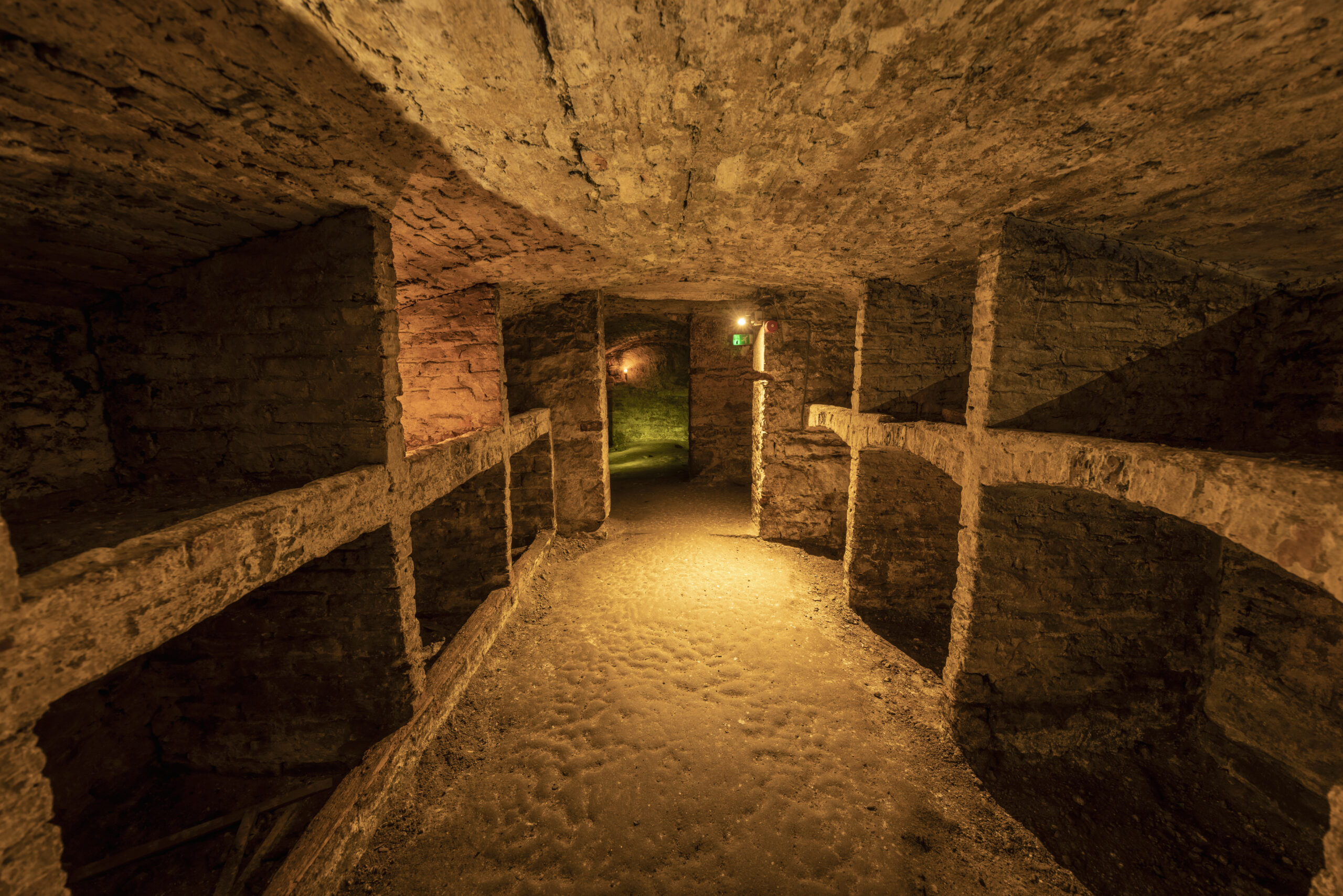
The vaults once housed storage areas for the shops above. Initially thriving, the 120 ‘rooms’ within the vaults became unsanitary, and were eventually abandoned by the shops in the mid-19th century.
Over time, the vaults became slum homes, taverns and home to many illegal activities including gin and whisky making, before finally being cleared out and blocked up.
The vaults were excavated in the 1980s and you can now visit the tunnels and rooms. The vaults have a reputation for being haunted – see what you think on a tour!
> How to visit:
- Take a ghost tour in the Blair Street Underground Vaults
- Auld Reekie Tours offers tours of the vaults, including historical and ghost tours.
- Mercat Tours provides tours of the Blair Street Underground Vaults.
3. The Glasgow Railway Tunnels, Central Station
Glasgow Central Station is the main railway hub in Glasgow, Scotland, opening in 1879. Known for its stunning architecture, it boasts a grand Victorian design and is one of the busiest stations in the UK.
The Glasgow Central Station and Railway Tunnels Tour offers a unique, behind-the-scenes exploration of the station’s subterranean world.
The tour includes a trip into the station’s vaults and disused platforms, such as the low-level platform beneath Argyle Street.
> How to visit: Glasgow Central Station
4. The Museum of Lead Mining, Wanlockhead
One of Scotland’s true hidden gems, take a journey into the Lowther Hills to hear about Scotland’s gold rush at The Museum of Lead Mining at Wanlockhead.
The museum sheds fascinating insight into life in Wanlockhead, including a section of accessible mine leading deep into the hillside. A tour is highly recommended.
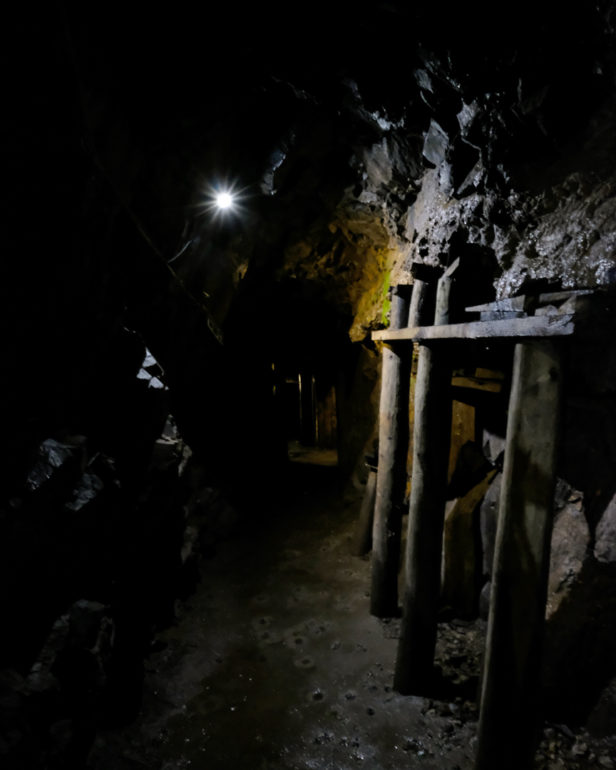

The Lowther hills were home to both lead and gold, and the village was founded in 1860, by the Duke of Buccleuch who built a lead smelting plant. The village’s gold was some of Scotland’s purest, and the Scottish crown was made out of gold mined in Wanlockhead.
> How to visit – the Museum of Lead Mining is open 1st April until 30th September and tours run daily at 11:25, 12:25, 13:55, 14:55, 15:55 (mine only).
5. Cruachan Power Station – The Hollow Mountain
Ben Cruachan is one of Scotland’s Munros (mountains over 3000ft) and the hill towers over Argyll and Bute – it is the highest point in the region.
The hill is a very steep climb and scrambly (1126m) and is usually climbed with its neighbour Stob Daimh over an 8 hour walk.
However, underneath the hill hides a huge underground hydro-electric power station which was built in the 1960s – and tunnelled out of granite.
How to visit > You can visit the Cruachan Visitor Centre on the banks of Loch Awe. Note that power station tours into the mountain are currently closed as they upgrade two of Cruachan’s four units.
6. St Margaret’s Cave, Dunfermline
St Margaret’s Cave in Dunfermline is a sacred spot where Queen Margaret, wife of King Malcolm III, would retreat to pray over 900 years ago. Today, visitors can descend 87 steps into the cave, which is now accessed via a tunnel beneath a car park.
The cave is open for free, pre-booked tours on Fridays, Saturdays, and Sundays until 29 September 2024. To visit, bookings must be made 48 hours in advance by phone, email, or in person at Dunfermline Carnegie Library & Galleries.
7. Underground bunkers of Scotland – cold war relics
Scotland’s underground bunkers, many dating back to the Cold War, were built to protect against potential nuclear threats.
Around 20 bunkers are scattered across the country and were designed for military and government use. You can visit:
The Secret Bunker near St Andrews
A Cold War-era nuclear command centre hidden 100 feet underground beneath a farmhouse. Built in 1951 as RAF Troywood, it was designed to house up to 300 personnel and serve as Scotland’s regional government headquarters in the event of a nuclear attack.
The facility spans 24,000 square feet over two levels, featuring radar rooms, dormitories, a BBC studio, and blast-proof doors. Decommissioned in 1993, it opened to the public in 1994 as a museum, offering a rare glimpse into Cold War history.
Visit Scotland’s Secret Bunker.
Skelmorlie Bunker, North Ayrshire
The Skelmorlie Secret Bunker, located in North Ayrshire, Scotland, is a restored Cold War-era underground monitoring post.
Constructed in 1965 as part of the Royal Observer Corps network, it was designed to detect and report on nuclear explosions and radioactive fallout.
The facility remained operational until 1991, when the Corps was disbanded. In 2004, former Corps member Frank Alexander led efforts to restore the bunker to its original condition.
Today, it serves as a museum, offering guided tours that provide insight into Cold War defense strategies.
Access is via a 15-foot vertical steel ladder, and tours are available by pre-booking only. An above-ground replica monitoring post is also on-site for those unable to access the underground facility.
Visit Skelmorlie Secret Bunker
Barnton Bunker, Edinburgh
Barnton Bunker, located beneath Corstorphine Hill in Edinburgh, is Scotland’s largest Cold War-era nuclear bunker.
Constructed in the 1950s, it served as a Sector Operations Centre under the ROTOR radar network, designed to detect and respond to Soviet bomber threats.
In the event of a nuclear attack, it could have functioned as a Regional Seat of Government, accommodating up to 400 officials for up to 30 days.
The bunker remained secret until the 1960s and was decommissioned in the early 1980s. Since 2011, volunteers have been restoring the site, aiming to open it as a museum and educational centre.
Visit Barnton Bunker
8. Caves in Scotland
Smoo Cave, Sutherland
Smoo Cave, located near Durness in the far north of Scotland, is one of the country’s largest sea caves. The cave’s entrance is impressive, featuring a large, open mouth formed by erosion from the Atlantic Ocean.
Smoo Cave has both a sea cave and a freshwater section, with a waterfall cascading into the cave’s interior. Visitors can explore the cave via a path and viewing platform, while some also take boat tours to fully appreciate its scale.
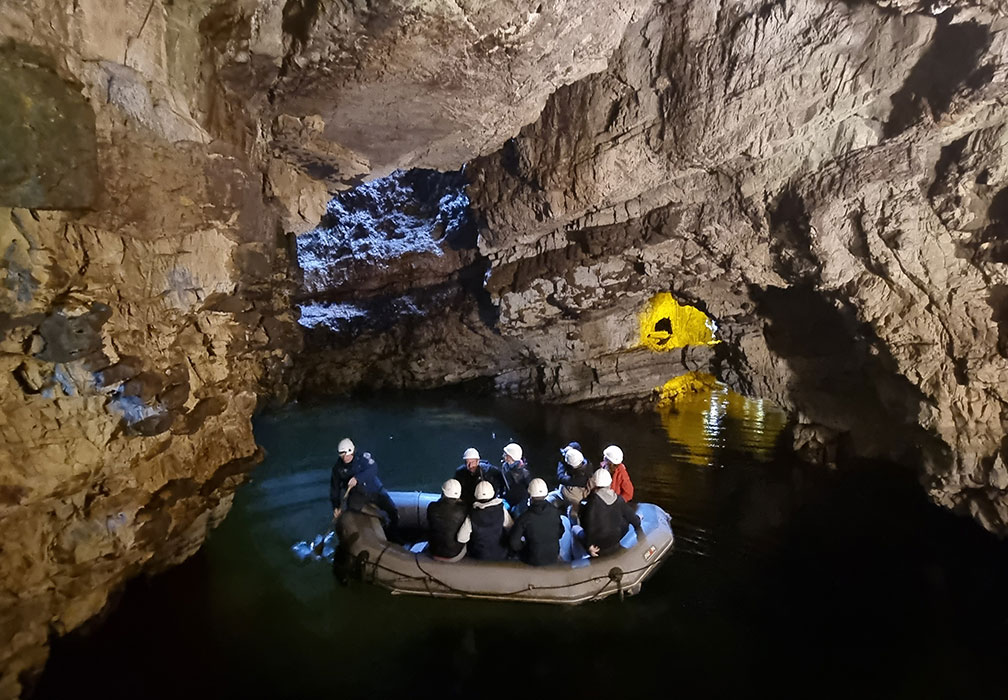
The Bone Caves, Inchnadamph, Sutherland
Discover these unusual caves on a cliff face, where the bones of polar bears (yes really!), wolf, lynx, arctic fox and brown bears have been found.
The walk up to the Creag nan Uamh (Crag of the Caves) along the Allt nan Uamh burn is beautiful – watch out for where the burn emerges from the base of a crag! Explore the Bone Caves with this circuit (3 miles, 2 hours).

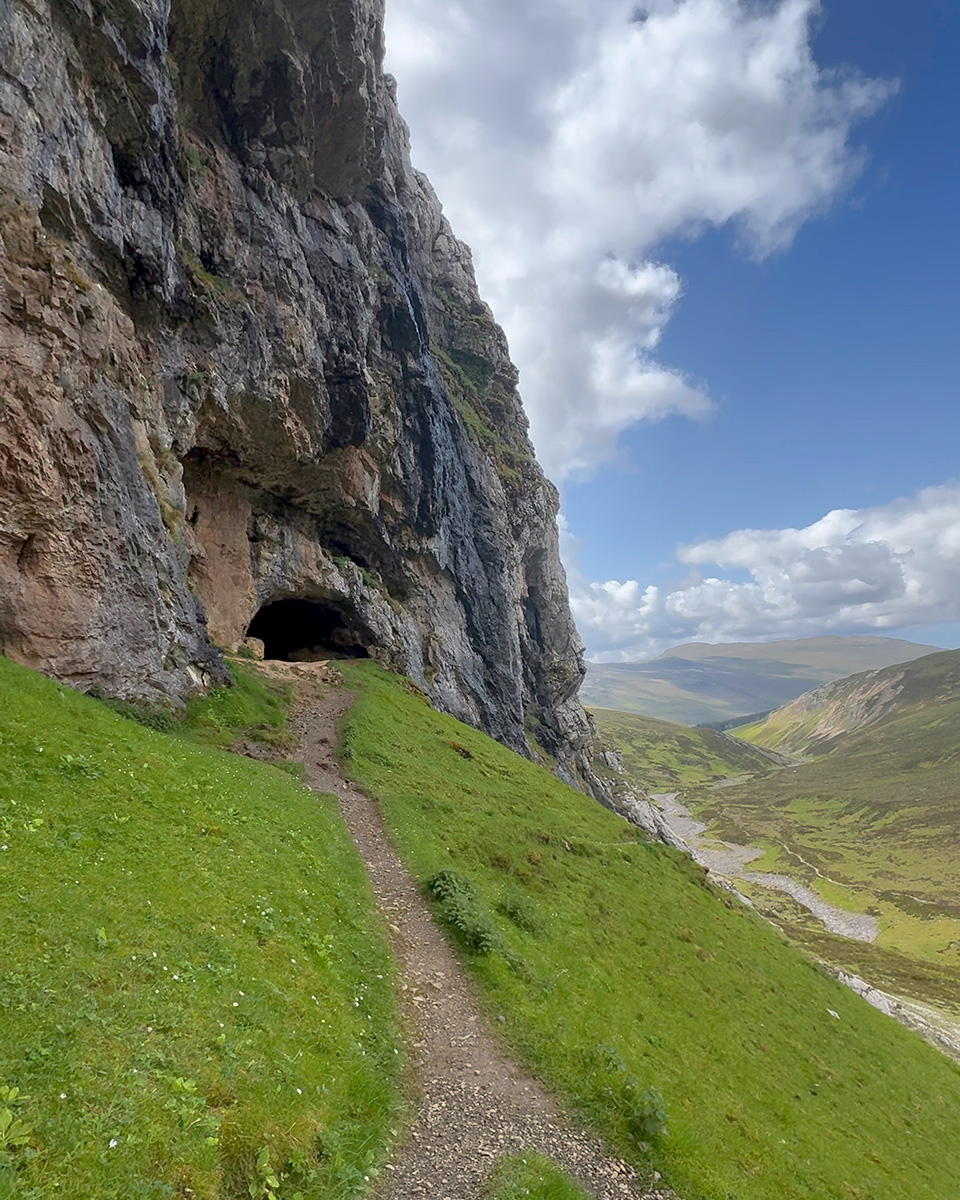
St Ninian’s Cave, Whithorn, Galloway
Stroll down to the Solway Firth to find a beautiful pebble beach and the curious St Ninian’s Cave once used by monks as a retreat.
King’s Cave, Isle of Arran
Whether or not they once sheltered Robert the Bruce, the King’s Cave on Arran’s west coast still make for an impressive sight There are impressive views of the Kintyre Peninsula and Drumadoon Point. The walk to the King’s Caves takes between 1-2 hours and starts at a signposted car park near Machrie. Visit the King’s Cave
Do you dare to head underground?
Love from Scotland x
